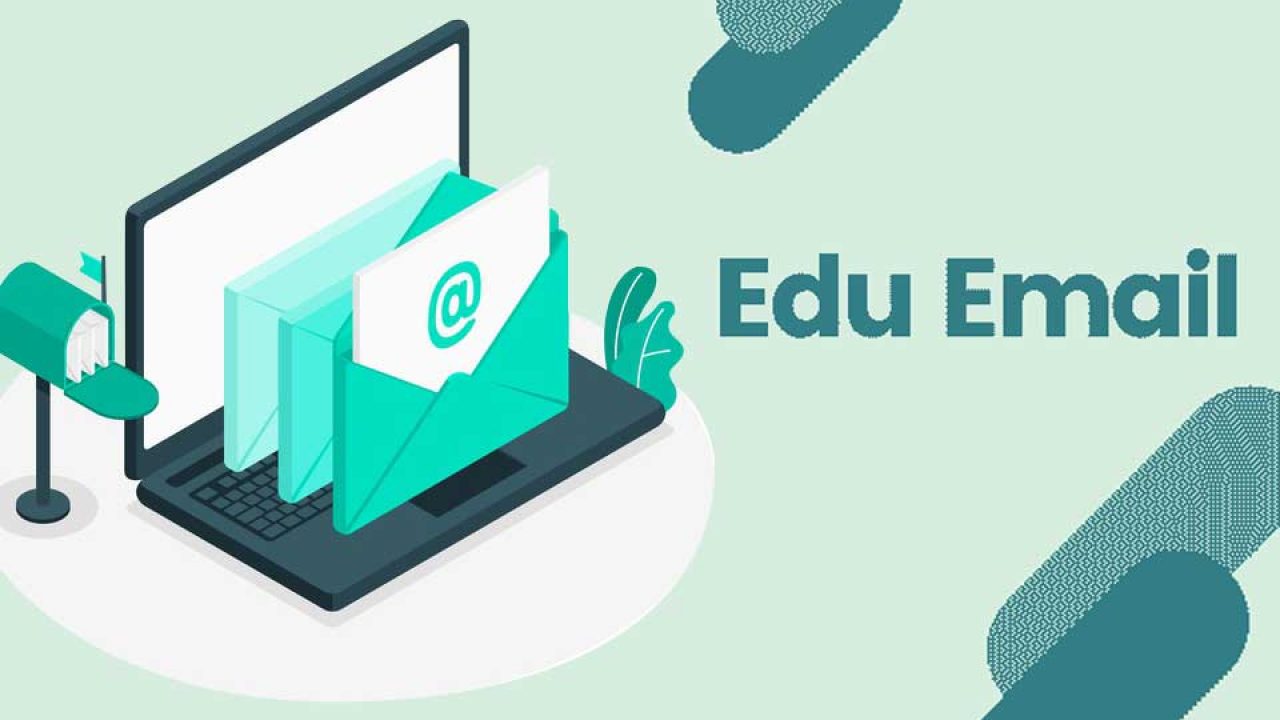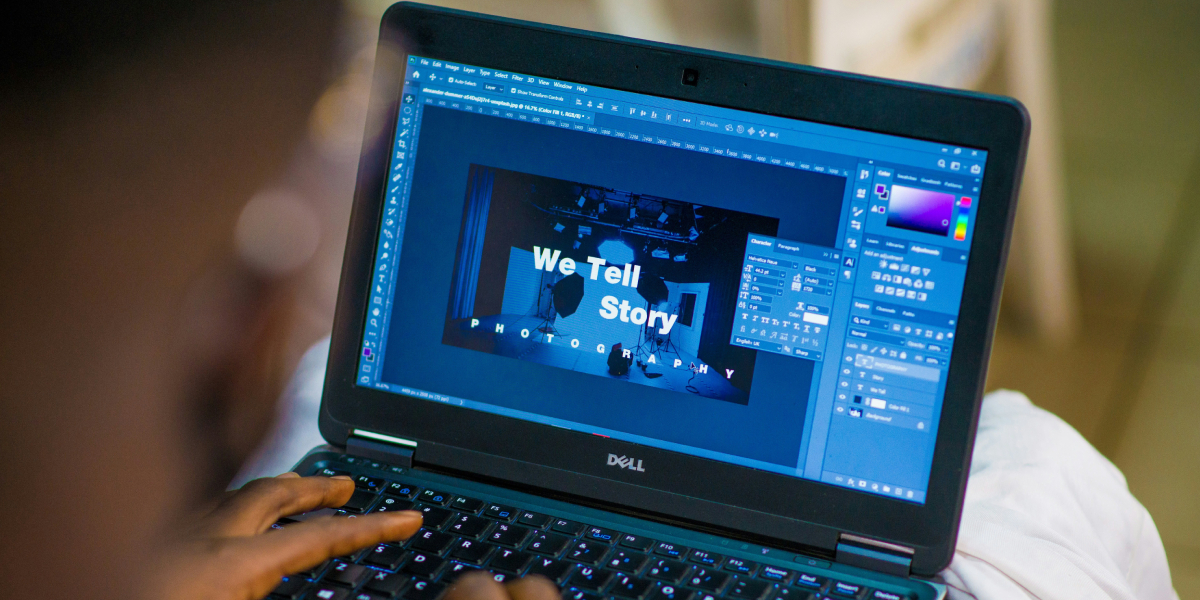Miscellaneous
How to create FREE .Edu email in 2021 (100 % Successful Method)
Published
4 years agoon
By
admin
Guess you are a student who has recently enrolled in a college or University. Have you ever been offered a customized Edu email address? Well, then you are quite lucky to get it.
But those who are not a student or if your University does not provide you with a free Edu email, then you don’t need to worry.
Here is a perfect guide made for you so that you can create and get an Edu email immediately. Using an Edu email is quite beneficial for all as it gives a great chance to grab opportunities from thousands of websites.
But before jumping to any further details, let’s get a closer view of what Edu email actually is about !!
What is an .Edu Email Address?
Unmentionably, we all have used email addresses and know how it works. But what is an Edu email address or why should one get an Edu email.
Basically, this Edu email address has an extension Edu and the format of this email address looks like “yourinfo@university_name.Edu”.
It is similar to the other email addresses including Gmail, Yahoo Mail, or Hotmail. But what’s different here is one cannot change the .edu email address name after it has been published.
This is why the users need to be careful while creating one. The free .Edu email is given to the students so that they can get all the necessary emails easily from college authorities, deans, professors, and others.
This email helps to keep the students updated regarding all the latest news of Educational activities.
But that’s not all!! Besides students, many universities also give free Edu email to their staff members so that everything can be carried out smoothly.
Why should one be Creating an Edu Email?
You must be thinking why should you even create an Edu Email? Or why is it required when you can use any other platform?
Those who are not aware of the fact should know that Edu email is probably the best kind of email extension you would come across.
There are companies that offer several benefits and deals to the ones using Edu emails.
And the most amazing thing about this email is that it is only offered by colleges and universities to the students and staff.
Looking to the other side, it also helps the students to keep themselves updated with the Educational activities.
That’s not the end!! Students using free Edu emails get access to various free services as well.
A list of benefits that one can get after Creating an Edu Email !!
Just like said earlier, one must think why they should even create an Edu email !!
The accurate reason behind this is getting an Edu email, comes with a list of benefits, some of them include,
- Discounts – students can receive discounts on Best buy, Spotify premium, and iTunes Purchases. Other than that, students would also get up to a 50% discount on Adobe Acrobat Cloud.
- Discount on Antivirus – individuals using Edu email would get a chance to grab discounts on different antivirus service providers.
- Free Access- on creating an Edu email address, you can get free access to Github Students Pack.
- Free subscription – using the free Edu email generator there will be a free subscription to students for Free pass, Amazon Prime, and many tools on Autodesk including CAD/CAM.
- Unlimited Subscription- besides a free subscription, Google Drive gives a free unlimited subscription to the users of this Edu email address.
How to Create an Edu Email Address with easy steps?
Creating a Gmail is quite an easy task to do, every other person can do it. But creating an Edu email could be a daunting task.
Though, it is a free mail creation process that brings affordability for students coming from diverse backgrounds, the creation of this free Edu email by using a generator is confusing. It’s divided into three parts or three steps.
Here are the steps listed in a detailed manner so that you can enjoy the best services of Edu in the future.
First Step
- Visit Virginia community – First, you need to visit Virginia’s community college and solve a captcha. After which the process of entering the User ID comes in.
- Enter email – Thereafter, you need to enter the name and the email address while the students can also use their real names.
- Create a fake Address – If you are not a citizen of the US, then you can simply use a fake address generator to create a false address. Thus, this tool is completely free to use.
- Submit – Once the address has been created, now you need to click on the “submit” button.
Second Step
- Account Login – Moving to the second step, where you would need to login to the account and then click on “apply”.
- Add Institute details – Make sure to add the details including the institute name and then proceed.
- Enter personal details – Enter all the details that have been asked.
This includes the date of birth, gender, number, and more. Then click on “submit”.
Third Step
- Receive username and password –
Once you complete the above two steps, you would be given the username and password.
Note: once you get the Edu email id, you can use it anytime needed. Also to let you know, the credentials of the logins would be activated in just a few hours.
Method 2 of Creating an Edu Email successfully !!
Here comes another easiest way of creating a free Edu email by using a generator.
So if the first method seems to be cumbersome, you can look up the second option.
Follow the steps below-
- Visit the link – Go to this URL ” https://www.dvc.Edu/future/steps/index.html and then enroll as a student
- Click on Tick – After this, you would be shown two options including “step one apply” and “CCCApply”. Make sure to tick them all. Basically, the website uses the CCCApply portal so that the free .edu email can be created. But at first, a CCC apply account is needed.
- Create CCCApply Account
Users who don’t have a CCC Apply nor have any idea to create one, need to keep reading until the end.
All the information is offered in detail so that your task becomes easier.
- Get Edu Email – Once you are done applying for CCCApply, you would get your Edu. email in no time.
Method 3 of creating an Edu Email Address easily.
- Visit College website – First, you need to visit the college’s official website and click on the apply button.
- Login – Once the login page appears, make sure to proceed with making a new registration.
- Click on International Applicant- Here you need to select the option “international applicant” and proceed.
- Click on Freshman Option- Now click on the “freshman” option and click on the “next” button.
- Switch the Diploma – After this, switch from the “diploma type” to the “no diploma” button.
- Enter Details and Submit – In this step, you would be asked to fill in the necessary details.
Make sure to fill them up and then click on the “next” button. Lastly, submit the application form.
Note: once the user and email Id has been received, you would have to wait for the account to get verified.
But once the verification is done, it might take two days or three days for the account to activate.
Final Words
It would not be incorrect to say that free .Edu email comes with unlimited benefits and options including a free domain name.
You are absolutely lucky if you have received the Edu email address from the university.
But if you don’t belong to any, then these above-mentioned steps would surely help.
So if you want to get these services, then make sure to create an Edu email address following the listed steps today.
Frequently Asked Questions
1. What does an Edu Email address mean?
Edu Email address can be referred to those email addresses that are offered by the universal colleges and school authorities.
It is given to the students and staff members so that they can keep themselves updated with the latest Educational activities.
Therefore, it is given to the students when one enrolls in a USA-based college or University.
2. Do students get to use Amazon Prime for free with an Edu email address?
Yes, students would get a free year of Amazon Prime besides granting them free two-day shipping on any product they purchase.
3. Why is the Edu Email address needed?
Basically, the Edu email address is needed to keep the students and staff updated with the ongoing Educational activities in colleges.
Besides that, it comes with many other benefits including huge discounts, on products and online services.
4. What is the Validity Period of the Edu Email Address?
The validity period of the Edu email address varies from one university to another.
Some universities have initiated it to work for four years whereas others may end up right after a few months of usage.
5. What benefits can one Get from the Edu Email Address?
The benefits that an Edu email address comes with are enormous.
Students can get unlimited Google Drive storage, free subscriptions, numerous discounts, and many other online services for free.

You may like
Miscellaneous
How to Start Coding from Zero Level with No Prior Experience
Published
2 months agoon
May 10, 2025By
admin
In today’s digital age, coding is more than just a technical skill — it’s a gateway to innovation, creativity, and lucrative career opportunities. Whether you’re looking to build a website, create a mobile app, automate tasks, or even land a job in tech, learning to code can be your ticket to achieving those goals. But where do you begin if you have absolutely no background in programming? This blog will guide you step-by-step on how to start coding from zero level, even if you’ve never written a line of code before.
Why Learning to Code Matters in 2025
Technology is evolving at lightning speed. In 2025, more industries than ever — from finance to fashion — rely on software and data. Here’s why learning to code is a smart move:
-
Job Security & Demand: Software developers, data analysts, and AI specialists are among the most sought-after professionals globally.
-
Creative Freedom: You can build your own games, websites, or tools tailored to your needs.
-
Freelance & Remote Work: Coding opens doors to work-from-anywhere opportunities.
-
Problem-Solving Skills: Programming sharpens logical thinking and analytical skills that are useful in any career.
Common Myths About Learning to Code
Before diving in, let’s debunk a few misconceptions:
-
“I’m not good at math.” You don’t need to be a math genius. Basic logic and problem-solving are more important.
-
“I’m too old to start.” Coding has no age limit. Many people start learning in their 30s, 40s, or even 60s.
-
“It’s too hard for beginners.” Like any skill, it takes time and effort, but it’s completely learnable with the right guidance.
Step 1: Shift Your Mindset
The first step in how to start coding from zero level is believing that you can do it. Coding is not an innate talent — it’s a learned skill. Here’s how to develop a coding-friendly mindset:
-
Embrace failure as part of the learning process.
-
Stay curious and be open to experimenting.
-
Celebrate small wins (like writing your first “Hello, World!”).
Step 2: Choose the Right Programming Language
There are hundreds of programming languages, but as a beginner, you should start with one that is beginner-friendly and widely used. Here are the top picks:
-
Python: Great for beginners due to its simple syntax. Widely used in web development, data science, and automation.
-
JavaScript: Ideal if you’re interested in web development.
-
Scratch: A visual programming language for absolute beginners and younger learners.
-
HTML/CSS: Not programming languages in the strictest sense, but essential for web development.
👉 Tip: Start with Python if you’re unsure. It’s versatile, and many educational platforms offer Python-based beginner courses.
Step 3: Set Up Your Coding Environment
Setting up your coding environment can be as simple or complex as you like. For beginners:
Install a Code Editor
Use a free and user-friendly code editor:
-
Visual Studio Code (VS Code)
-
Sublime Text
-
Atom
Use Online Platforms
If you don’t want to install anything initially, use online environments:
-
Replit (replit.com)
-
Google Colab (for Python)
-
CodePen (for HTML/CSS/JS)
Step 4: Use Beginner-Friendly Learning Resources
You don’t need to attend a 4-year college program to learn to code. Use these accessible, high-quality resources:
Free Platforms:
-
freeCodeCamp.org
-
CS50 by Harvard (edX)
-
Khan Academy
-
W3Schools
Paid but Affordable:
-
Udemy (watch for discounts)
-
Coursera (many free options available)
-
Codecademy
YouTube Channels:
-
Programming with Mosh
-
The Net Ninja
-
Traversy Media
Choose a platform that matches your learning style — video tutorials, interactive coding challenges, or reading material.
Step 5: Practice with Mini Projects
The key to mastering coding is practice. Watching tutorials isn’t enough. Start creating your own simple projects, such as:
-
A calculator
-
A to-do list app
-
A personal portfolio website
-
A quiz game
-
A random joke generator
These projects will help reinforce concepts and build confidence.
👉 Pro Tip: Try rebuilding something you use every day. It helps you understand real-world applications of code.
Step 6: Join Coding Communities
Learning doesn’t have to be a lonely journey. Surrounding yourself with like-minded learners can accelerate your progress. Here’s where to find your tribe:
-
Reddit: r/learnprogramming
-
Stack Overflow: Ask questions, read answers.
-
Discord & Slack Communities: Many coding bootcamps and groups offer access.
-
Meetup.com: Find local coding events or online sessions.
These communities are great for motivation, debugging help, and networking.
Step 7: Understand the Fundamentals of Computer Science
You don’t need a computer science degree, but understanding the basics will give you a solid foundation. Focus on:
-
Data structures: Arrays, lists, stacks, and queues.
-
Algorithms: Sorting, searching, loops, and recursion.
-
Memory management: How computers allocate and store data.
-
Logic and control flow: If-else conditions, loops, and switches.
Plenty of free resources explain these concepts simply. Try “Grokking Algorithms” or MIT’s OpenCourseWare.
Step 8: Build a Portfolio
Once you’ve completed a few projects, start organizing your work into a portfolio. This is especially important if you plan to:
-
Apply for internships or jobs
-
Freelance
-
Join hackathons or tech competitions
Your portfolio should include:
-
A brief bio
-
Links to your projects (hosted on GitHub or live on Netlify/Heroku)
-
Screenshots and descriptions of each project
-
Your resume (optional)
Step 9: Stay Consistent and Keep Learning
Consistency beats intensity. Even 30 minutes a day is enough to build your skills over time. Here’s how to stay on track:
-
Set a schedule and stick to it.
-
Break big topics into manageable pieces.
-
Use apps like Habitica or Notion to track progress.
-
Revisit and improve old projects.
As you gain confidence, you can explore advanced topics like APIs, databases, cloud computing, and machine learning.
Bonus: Tools and Platforms to Explore
-
GitHub: To store and share your code.
-
StackBlitz: Browser-based code editor for web projects.
-
LeetCode & HackerRank: Great for practicing coding challenges.
-
Notion or Trello: Organize your learning journey and projects.
-
Google Sheets: Track your daily learning goals and progress.
Frequently Asked Questions
How long does it take to learn coding from scratch?
With consistent effort (1-2 hours daily), you can become proficient in basic coding within 3 to 6 months.
Do I need a powerful computer to start coding?
No. Most beginner coding tasks can be done on a basic laptop or even online platforms like Replit.
Should I learn coding on my own or join a bootcamp?
Both are valid options. Self-learning offers flexibility, while bootcamps provide structure and mentorship. Choose what fits your lifestyle and budget.
Final Thoughts
Learning how to start coding from zero level may seem overwhelming at first, but it’s one of the most rewarding journeys you can take. With the right mindset, resources, and community, anyone can become a proficient coder — regardless of age, background, or prior experience.
Remember, coding is a marathon, not a sprint. You’ll make mistakes, get stuck, and feel frustrated at times — but that’s all part of the process. The key is to start small, stay consistent, and never stop building.
Whether you dream of building apps, launching your own tech startup, or simply understanding the digital world around you, there’s no better time than now to take the first step.
So, what are you waiting for? Dive in and explore how to start coding from zero level today — your future self will thank you.
Miscellaneous
Why Great Output Doesn’t Always Mean Great Performance
Published
3 months agoon
April 25, 2025By
admin
Remote teams often look successful on paper – tasks checked off, projects completed, boxes ticked. But what happens when all that visible output isn’t backed by consistent, high-quality performance? It’s a gap that’s easy to miss and tough to correct once it starts affecting the entire flow of work.
This article explores what separates great output from excellent performance and how you can guide your team toward meaningful, lasting results. A monitoring tool helps you understand how to monitor remote work effectively, giving you the visibility to spot patterns, support your team more effectively, and build habits that lead to lasting performance.
When Output Shines but Performance Slips
It’s easy to assume that everything is fine as long as deadlines are met, but not all output tells the full story. In remote environments, things can look good on the surface, but real problems grow underneath.
Here are four ways output can give a false sense of progress:
- Rushed Delivery Over Thoughtful Execution: Tasks are done on time, but corners are cut. Quality drops, and rework becomes the norm.
- Lack of Proactive Communication: Team members stay quiet unless asked. Ideas stay siloed, and collaboration feels forced or reactive.
- Overwork Disguised as Commitment: Some teammates seem all-in, but they’re really stuck in a cycle of doing too much for too long without a break.
- Results Without Clarity: Goals are being hit, but no one can clearly explain how or whether those goals still align with the bigger picture.
How to Move from Activity to Real Impact
High-performing teams don’t just look productive. They consistently deliver solid work in a way that’s built to last. That happens when the right habits, systems, and leadership support performance.
Here’s how to shift from surface-level success to deeper, more reliable performance:
Prioritize How Work Gets Done, Not Just When
Deadlines are important, but consistent performance depends on the process behind the delivery. Encourage your team to break down their tasks and stay intentional about how they approach each one. Focus on structure over speed.
Promote short daily planning sessions to clarify priorities and reduce last-minute scrambles. Once a big task wraps up, take a few minutes to look back on what worked well and what could use a tweak next time.
Reinforce the idea that quality and clarity take precedence over rushing through a checklist. When your team works with that mindset, output becomes more reliable and less reactive.
Hybrid and remote employee monitoring software supports this shift by showing how time is used across tasks, making it easier to guide workflow improvements.
Make Proactive Check-Ins Part of the Culture
Set a weekly rhythm for short, focused syncs where each person can share what they’re working on and flag anything that needs input. Keep the structure simple and repeatable so it becomes part of the routine.
Use these moments to clarify expectations, reinforce priorities, and encourage open communication. Make space for quiet voices to speak up and for team members to support each other rather than just report to you. Proactive check-ins build trust and create space for small problems to be addressed early.
Remote work monitoring software adds helpful context to daily workflows, making your conversations more focused and easier to act on.
Look for Patterns, Not Just Hours
High output driven by long hours often signals burnout, not high performance. Start tracking consistency over time rather than daily spikes in effort. If someone regularly works late or logs excessive hours, it’s time to pause and reassess. Look at what’s causing the overload and whether the workload can be shared or restructured.
Set the tone by recognizing well-paced, high-quality work rather than non-stop availability. Reinforce healthy work habits like taking real breaks and ending the day at a reasonable time. Build a culture where smart effort matters more than long hours.
Remote workforce monitoring software helps identify these trends early, showing where energy is drained and where a more balanced workflow can be encouraged.
Link Every Task to a Purpose
Tasks carry more weight when there’s a clear reason behind them. Don’t assume everyone sees how their work fits into the bigger picture, so make it part of your regular conversations. Connect each task to what the team is working toward so it feels less like busywork and more like progress.
Review progress in the context of broader objectives, not just completed checklists. When your team understands the impact of their tasks, motivation tends to rise and distractions fall away. It also makes it easier to prioritize and adjust work when plans shift.
A monitoring tool like Insightful (ex Workpuls) makes it easier to see where time is actually going across projects, whether your team is remote, in the office, or somewhere in between. It helps you align everyday work with what really matters.
Strengthen Real Performance with Smart Tools
To manage all this, you need more than just gut instinct. That’s where a monitoring tool can make the difference. It doesn’t just show what is getting done, it shows how.
Here’s how this type of tool supports great performance:
- Real-Time Workflow View: Helps you catch distractions and time drains early, so small issues don’t turn into bigger problems.
- Work Insights: Give you a clear view into daily progress, showing where momentum is building and where things need a nudge to stay on track.
- Behavioral Trends: Reveal where burnout might be creeping in, so you can act before it affects morale or performance.
- Data-Driven Conversations: Give you the insight to coach better, step in when someone’s stuck, and spotlight the ones quietly doing great work.
Conclusion
Visibility, clarity, and accountability aren’t just nice to have. They’re the foundation of a team that performs at its best, day in and day out. The right habits, backed by a solid monitoring tool, make it easier to stop just ticking boxes and start building real, lasting momentum.
Great output might get you through the quarter, but great performance is what carries a team through change, pressure, and growth. It’s what turns one win into a repeatable system that lifts everyone.
Miscellaneous
How to Become a Graphic Designer Without a Degree: Unleashing Your Creative Journey
Published
3 months agoon
April 22, 2025By
admin
In a world that increasingly values creativity and visual communication, the demand for skilled graphic designers is on the rise. Traditionally, a degree was seen as a prerequisite for entering the field, but times have changed. Today, many successful graphic designers have forged their paths without a formal education. In this article, we will explore the steps and strategies to Become a Graphic Designer Without a Degree, focusing on unlocking your creativity and building a strong portfolio.
The Changing Landscape of Graphic Design:
If you are looking for How to Become a Graphic Designer Without a Degree then you must know that Graphic design is a dynamic field that has evolved significantly in the digital age. The advent of powerful design software, online platforms, and a growing emphasis on practical skills over formal education has democratized the field. Companies are now placing greater importance on a candidate’s portfolio and practical abilities rather than a degree.
Embracing Your Creativity:
Understand the Basics of Design: Before diving into the digital realm, it’s crucial to grasp the fundamental principles of design. Learn about color theory, typography, composition, and balance. Numerous online resources, tutorials, and books can provide a solid foundation.
Explore Various Design Styles: Exposure to different design styles helps you identify your preferences and strengths. Experiment with minimalist design, bold and vibrant styles, and everything in between. This exploration phase will contribute to your unique design voice.
Building Your Skill Set:
Master Design Software: Proficiency in industry-standard software is essential. Adobe Creative Suite, including Photoshop, Illustrator, and InDesign, is widely used in the field. There are various online courses, YouTube tutorials, and community forums where you can learn these tools at your own pace.
Stay Updated with Industry Trends: Graphic design is a field that constantly evolves. Follow design blogs, subscribe to design magazines, and participate in online forums to stay informed about the latest trends and emerging technologies.
Creating a Strong Portfolio:
Start with Personal Projects: Initiate personal design projects to showcase your skills. This could be designing a logo for a fictional company, creating social media graphics, or even redesigning existing material to demonstrate improvement. Personal projects allow you to express your creativity freely.
Freelance Opportunities: If you want to know How to Become a Graphic Designer Without a Degree then you must Engage in freelance work to gain practical experience and build your portfolio. Platforms like Upwork, Fiverr, and Freelancer offer opportunities to work on real projects and establish a client base. Positive reviews and completed projects enhance your credibility.
Networking and Online Presence:
Build an Online Portfolio: To Become a Graphic Designer Without a Degree you must create a professional website showcasing your portfolio. Platforms like Behance and Dribbble are also excellent for displaying your work and connecting with other designers. A well-curated online presence makes you more visible to potential clients and employers.
Engage in Social Media: Utilize social media platforms to share your work, connect with other designers, and stay engaged with the design community. Instagram, Twitter, and LinkedIn are powerful tools for networking and getting your work noticed.
Continuous Learning:
Online Courses and Certifications: If you want to know How to Become a Graphic Designer Without a Degree then you must know that while a formal degree may not be necessary, but ongoing education is crucial. Enroll in online courses or pursue certifications in specialized areas like UX/UI design, motion graphics, or branding. Continuous learning not only enhances your skills but also demonstrates your commitment to professional development.
Seek Feedback and Critique: Join design communities where you can receive constructive feedback on your work. Critique helps you identify areas for improvement and refine your design sensibilities.
Overcoming Challenges:
Develop a Strong Work Ethic: Success in graphic design, like any field, requires dedication and hard work. Develop a strong work ethic, meet deadlines, and prioritize client satisfaction. Consistency and reliability contribute significantly to building a successful career.
Learn from Setbacks: Understand that setbacks are a natural part of any creative journey. Learn from criticism, adapt to changes, and view challenges as opportunities for growth. Resilience is a valuable trait in the ever-evolving field of graphic design.
Conclusion:
Becoming a graphic designer without a degree is not only possible but increasingly common in today’s creative landscape. By embracing your creativity, building a diverse skill set, and actively participating in the design community, you can forge a successful career path. Remember, a strong portfolio, continuous learning, and effective networking are key components of a thriving career in graphic design. So, unleash your creativity, stay curious, and embark on your journey to becoming a self-taught graphic designer.

The Ultimate Guide to the Best Android Strategy Games in 2025: What to Play and Why

What Are the Most Effective Digital Marketing Strategies?

Everything You Need to Know About Windows 11

The Best E commerce Platforms for Small Businesses in 2025

How to Start Coding from Zero Level with No Prior Experience

Why Great Output Doesn’t Always Mean Great Performance

Top 3 Advanced Persistent Threats and How Businesses Can Stop their Attacks

14 Actionable Tips to Improve Your Manufacturing Business

10 Tips for Optimizing Images for SEO

10 Most Profitable Businesses in India
Trending
-

 Miscellaneous3 years ago
Miscellaneous3 years agoSubnautica Below Zero Map – Know About Complete World Map and Coordinates 2021
-

 Mobile2 years ago
Mobile2 years agoVivo Company Belongs to Which Country? Vivo Made in Which Country? Is Vivo Chinese Company?
-

 Gaming2 years ago
Gaming2 years agoWhen Did the PS4 Come Out
-

 Gaming3 years ago
Gaming3 years agoWhy F95 Zone is the Leading Gaming Community?
